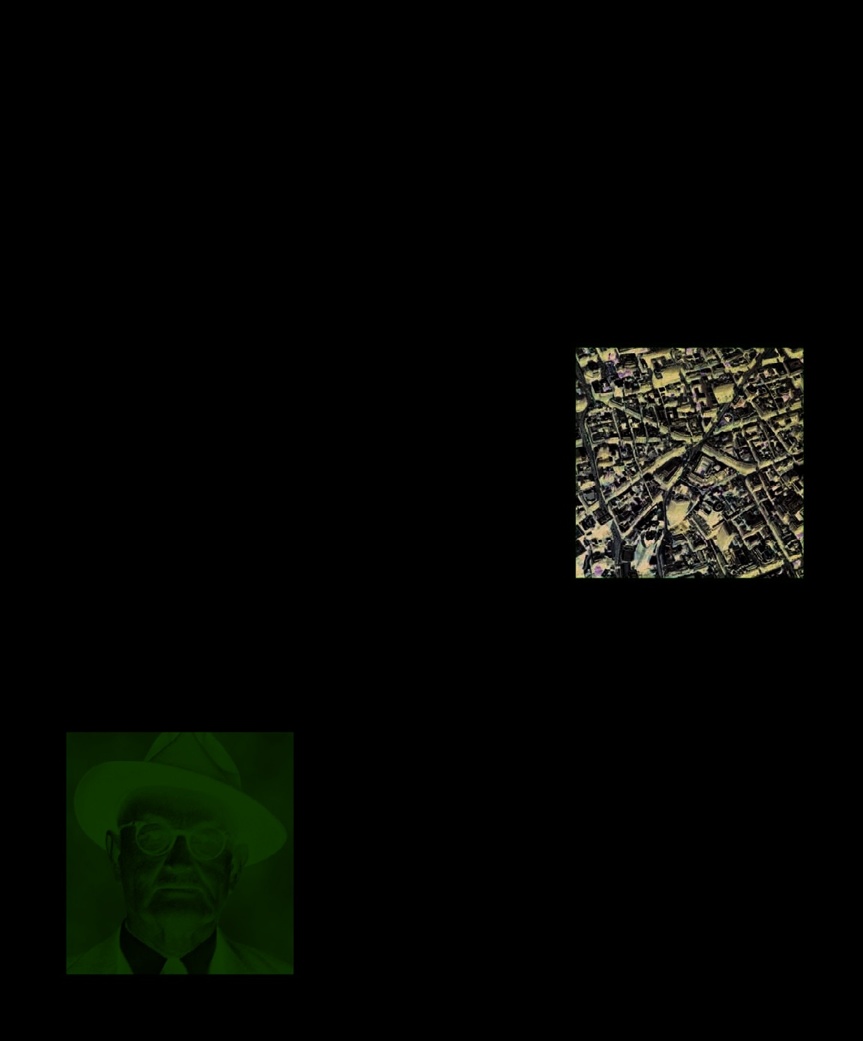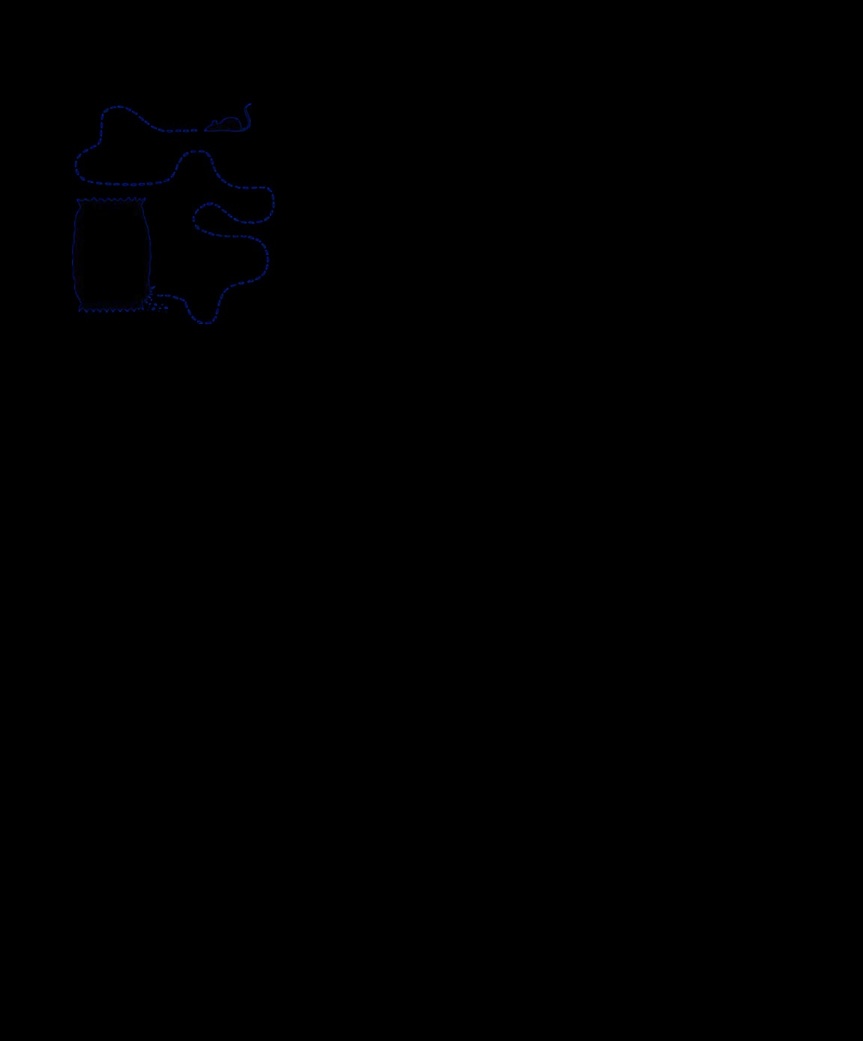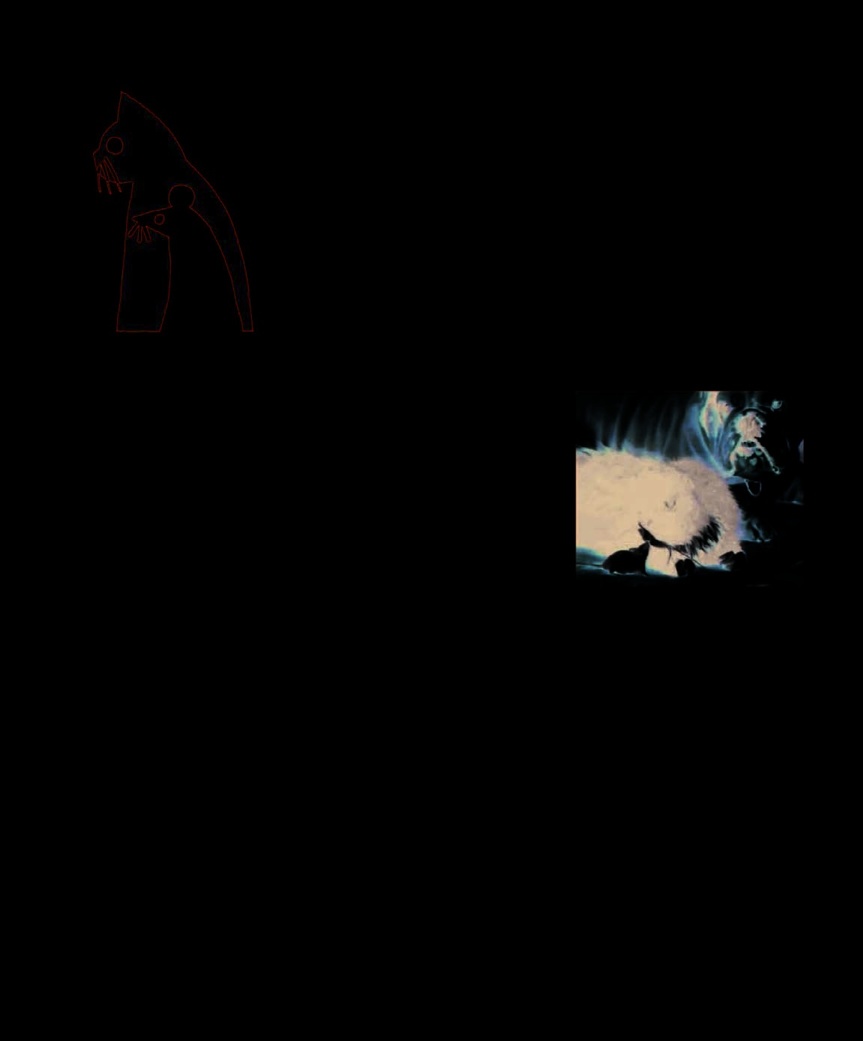The Psychology Book (24 page)
Read The Psychology Book Online
Authors: Unknown

cognitive map of
replaces behaviorism as the
their environment,
dominant movement in
which is like a
psychology.
“God-given maze.”
1980s
Joseph Wolpe’s
behavioral therapy and
Aaron Beck’s cognitive
therapy merge into cognitive
behavioral therapy.
Humans think in a
…which can be used
similar way to rats.
to
reach a goal
.

BEHAVIORISM 73
See also:
Ivan Pavlov 60–61 ■ Edward Thorndike 62–65 ■ John B. Watson 66–71 ■ B.F. Skinner 78–85 ■ Joseph Wolpe 86–87 ■ Wolfgang Köhler 160–61 ■ Daniel Kahneman 193
were only rewarded after six days,
route. Further experiments showed
and a third group rewarded after
that the rats learned a sense of
two days, Tolman’s ideas were
location rather than merely the turns
confirmed. The second and third
required to reach a particular place.
groups made fewer errors when
In
Purposive Behavior in Animals
running the maze the day after
and Men
, Tolman outlined his theory
There is more than one
they had been rewarded with food,
of latent learning and cognitive
kind of learning.
demonstrating that they already
maps, bringing together the
Edward Tolman
“knew” their way around the maze,
methodology of behaviorism with
having learned it prior to receiving
Gestalt psychology, and introducing
rewards. Once rewards were on
the element of cognition. ■
offer, they were able to use the
“cognitive map” they had built in
order to negotiate the maze faster.
Tolman questioned the basic
premise of conditioned learning
Latent learning
(that behavior was learned simply
Tolman referred to the rats’ initial
by an automatic response to a
learning period, where there was no
stimulus). He believed that animals
obvious reward, as “latent learning.”
could learn about the world around
He believed that as all animals,
them without the reinforcement
including humans, go about their
of a reward, and later use that
daily lives, they build up a cognitive
knowledge in decision-making.
map of the world around them—the
He designed a series of
“God-given maze”—which they can
experiments using rats in mazes to
apply to locate specific goals. He
examine the role of reinforcement
gave the example of how we learn
A cognitive map
of our surroundings
in learning. Comparing a group of
the locations of various landmarks
develops in the course of our daily
rats that were rewarded with food
on our daily journeys, but only realize
lives. We may not be aware of this
daily for successfully negotiating
what we have learned when we
until we need to find somewhere that
the maze, with another group who
need to find somewhere along the
we have passed without noticing.
Edward Tolman
Edward Chace Tolman was born
here that he experimented
into a well-to-do family in West
with rats in mazes. During
Newton, Massachusetts.
the McCarthy period, he was
He studied at the Massachusetts
threatened with dismissal for
Institute of Technology, graduating
not signing a loyalty oath that
in electrochemistry in 1911, but
he felt restricted academic
after reading works by William
freedom. The case was
James opted for a postgraduate
overturned in 1955. He died in
degree at Harvard in philosophy
Berkeley, aged 73, in 1959.
and psychology. While studying,
he traveled to Germany and was
Key works
introduced to Gestalt psychology.
After gaining his doctorate, he
1932
Purposive Behavior in
taught at Northwestern University,
Animals and Men
but his pacifist views lost him his
1942
Drives Toward War
job, and he moved to the University
1948
Cognitive Maps in Rats
of California at Berkeley. It was
and Men

74
ONCE A RAT HAS VISITED
OUR GRAIN SACK
WE CAN PLAN
ON ITS RETURN
EDWIN GUTHRIE (1886–1959)
IN CONTEXT
APPROACH
B
y the 1920s, when American way, Guthrie said, once a rat has
philosopher Edwin Guthrie
discovered a source of food, it knows
turned his attention to
where to come when it is hungry.
psychology, the stimulus–response
Guthrie expanded his idea into
Learning theory
model of learning formed the basis
a theory of “contiguity,” stating that
BEFORE
of almost all behaviorist theories.
“a combination of stimuli, which
Derived from Ivan Pavlov’s idea of
has accompanied a movement, will
1890s
Ivan Pavlov shows
“classical conditioning,” it claimed
on its reoccurrence tend to be
“classical conditioning” in dogs.
that repeatedly exposing subjects
followed by that movement.”
1890S
Edward Thorndike
to particular stimuli combinations
A movement, not behavior, is
designs the “puzzle box” for
(such as being given food and
learned from stimulus–response
his experiments on cats.
ringing a bell) could eventually
association. Related movements
provoke conditioned responses (such
combine to form an act; repetition
1920S
Edward Tolman queries
as salivating when a bell is rung).
does not reinforce the association
the role of reinforcement in
Although Guthrie was a strict
but leads to the formation of acts,
conditioning.
behaviorist, he did not agree that
which combine to form behavior. ■
AFTER
conditioning needed reinforcement
1938
B.F. Skinner’s
The
to be successful. He believed that a
full association between a specific
Behavior of Organisms
presents
stimulus and response is made in
the idea of operant conditioning,
their very first pairing. Guthrie’s
emphasizing the role of
theory of one-trial learning was
consequences in behavior.
based on a study in which he
We expect one quarrel
1940s
Jean Piaget develops a
observed cats trapped in “puzzle
to change attitudes.
theory of learning that claims
boxes.” The cats, once they had
Edwin Guthrie
children are naturally driven to
discovered the mechanism for
explore and acquire knowledge.
escape, made the association
between escape and their action,
1977
Albert Bandura’s
Social
which they would then repeat on
Learning Theory
states that
subsequent occasions. In the same
behavior is learned from
observing and copying the
See also:
Ivan Pavlov 60–61 ■ Edward Thorndike 62–65 ■ Edward Tolman 72–73 ■
behavior of others.
B.F. Skinner 78–85 ■ Jean Piaget 262–69 ■ Albert Bandura 286–91

BEHAVIORISM 75
NOTHING IS MORE
NATURALTHAN
FOR THE CAT TO
“LOVE” THE RAT
ZING-YANG KUO (1898–1970)
IN CONTEXT
APPROACH
I
n the 1920s, behaviorist John
B. Watson was claiming that
even innate behavior could be
altered by conditioning. But it was
Behavioral epigenetics
the Chinese psychologist
BEFORE
Zing-Yang Kuo who took the
behaviorist idea to its extreme,
1874
Francis Galton addresses
denying the existence of instinct
the nature–nurture controversy
as an explanation for behavior.
in
English Men of Science:
Kuo felt that instinct was just
Their Nature and Nurture.
a convenient way for psychologists
1924
John B. Watson makes
to explain behavior that did not
his famous “dozen infants”
fit current theory: “Our behavior
Harmonious relationships
,
Kuo
boast that anyone, regardless
researches in the past have been
proved, can exist between animals that
of their basic nature, can be
in the wrong direction, because,
are traditionally regarded as enemies.
trained to be anything.
instead of finding how we could
He concluded that there is no “innate
mechanism” driving them to fight.
build nature into the animal, we
AFTER
have tried to find nature in the
1938
B.F. Skinner in
The
animal.” Kuo’s most well-known
Kuo’s work was cut short by political
Behavior of Organisms
explains
experiments involved rearing
events in China, which forced him
his radical behaviorist ideas,
kittens—some raised from birth in
to flee first to the US, then Hong
claiming that circumstances,
cages with rats, others introduced
Kong. His ideas only became known
not instinct, govern behavior.
to rats at later stages. He found that
in the West as behaviorism was
“if a kitten was raised in the same
beginning to wane and cognitive
1942
Edward Tolman
cage with a rat since it was very
psychology was in the ascendant.
publishes
Drives Toward War
,
young, it, when grown-up, became
However, his theory of ongoing
which examines whether
tolerant of rats: not only would it
development without innate
aggression is conditioned
never attack a rat, but it adopted
mechanisms was influential as
or instinctive.
the rat as its ‘mate’, played with it,
a counter to the instinct-based
1966
Konrad Lorenz publishes
and even became attached to it.”
psychology of Konrad Lorenz. ■
On Aggression
, explaining
aggressive behavior as an
See also:
Francis Galton 28–29 ■ John B. Watson 66–71 ■ Edward Tolman 72–73 ■
